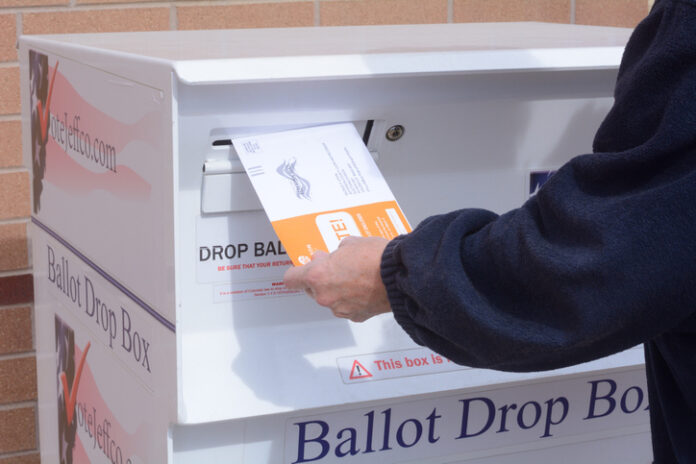Election integrity must be states’ first priority in 2024, as “At least one-in-five mail-in voters admitted to committing at least one type of election fraud in 2020.” (Opinion)
By Chris Talgo
The United States is facing a crossroads vis-à-vis how our elections are conducted. Will we take the tried-and-true path, which we have trekked successfully for more than two centuries? Or, will we go down the dangerous road that was paved in 2020?
In other words, will we continue to conduct our elections in a manner that minimizes the potential for voter fraud or will we succumb to those who want to exploit the inherent vulnerabilities that go alongside mass mail-in voting?
As most Americans probably instinctively knew at the time, the 2020 election was not the most “safe and secure” in our nation’s history. On the contrary, the 2020 election was almost certainly one of the most corrupt elections in modern U.S. history.
This is not speculative, nor hyperbole. In fact, the voters, themselves, have made this abundantly clear.
In late 2023, The Heartland Institute conducted a poll with Rasmussen Reports to determine the degree of voter fraud in the 2020 election. The results speak for themselves: At least one-in-five mail-in voters admitted to committing at least one type of election fraud in 2020.
Let that sink in for a moment. In 2020, approximately 65 million ballots were cast by mail – the most in U.S. history, by a country mile. If 20 percent of those ballots were cast fraudulently, that means nearly 13 million illegal votes were counted in the 2020 election.
However, it gets worse.
Shortly after releasing the aforementioned poll, my colleagues and I began wondering if the flood of fraudulent mail-in ballots could have impacted the outcome of the 2020 election. Unfortunately, we concluded that yes, widespread mail-in voter fraud almost surely changed the outcome of the election. For more on this, check out our latest policy study: Who Really Won the 2020 Election?
Now, back to election integrity.
In recent years, the Pew Research Center has tracked Americans’ “views of election administration and confidence in vote counts.” In 2018, 81 percent of registered voters said they believed elections were run and administered “very” or “somewhat well.” In 2022, that declined to 70 percent.
Even more importantly, there is a stark contrast now between Republicans and Democrats when it comes to confidence in the election process. In 2018, 87 percent of GOP supporters said they had confidence that elections were administered well. Four years later, that dropped to 56 percent. On the other hand, over the same period, Democrats’ confidence in the administration of elections increased from 79 percent to 88 percent.
The same trend applies to mail-in voting. In 2022, only 37 percent of Republicans trusted that mail-in ballots were counted correctly whereas 87 percent of Democrats trusted in the accuracy of mail-in voting.
Gee, I wonder what could account for this huge partisan gap when it comes to trust in mail-in voting?
Regardless of the partisan divide, it is of paramount importance that the vast majority of all Americans have faith in elections. We do not want to live in a nation where only one side has confidence in electoral results. After all, that typically does not end well.
So, what can be done to avoid this terrible scenario? Can it even be avoided?
Fortunately, the answer to the latter is yes. As for the former, there is much that can be done to ensure election integrity.
As outlined in the above Policy Study, there are several measures states can and should take to safeguard elections. When it comes to mail-in balloting, all 50 states should encourage their citizens to vote in-person, preferentially as close to Election Day as possible. Of course, a small portion of voters cannot physically go to the voting booth, which is why mail-in voting should be an exception, not the norm. It would also behoove states to shore up signature verification procedures, require a notary or witness signature on mail-in ballots, eliminate unattended and unsecure ballot drop boxes, as well as outlawing ballot harvesting. Lastly, states should annually clean their voter registration rolls, which are full of deceased voters and voters who no longer live at the address on the chronically outdated rolls. In terms of in-person voting, states should require identification to vote.
Undoubtedly, many on the left will decry these measures to reduce fraudulent voting. Yes, they will yell that it is tantamount to voter suppression. You can also bet they will play the race card.
But those arguments are nonsense. Moreover, real world evidence says the opposite is true. Since 2020, a few states, namely Florida and Georgia, have instituted at least some of the policies recommended above. What happened? Voter turnout increased, particularly among minority voters.
With less than nine months before Election Day 2024, states don’t have much time to waste. The time to act is now, not later.
The most significant right of all is the franchise – the right to vote. This sacred right must be defended at all costs. Every time an illegal vote is cast, it disenfranchises another. We must stop this madness before it is too late.
Chris Talgo (ctalgo@heartland.org) is editorial director at The Heartland Institute.
Originally published by The Center Square. Republished with permission.
For more great content from Budget & Tax News.











